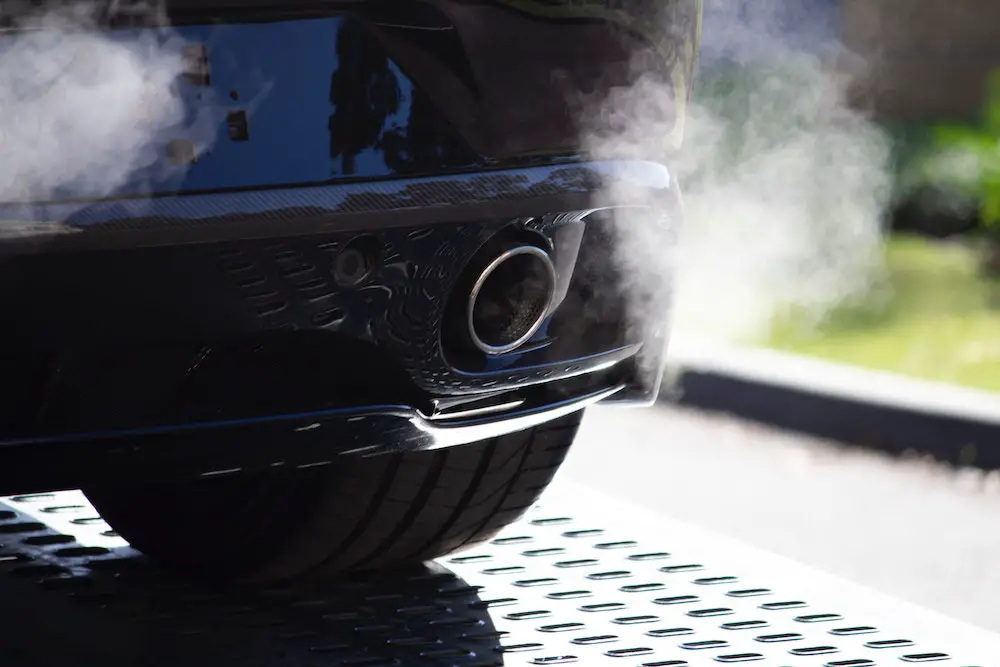What is a NOx sensor?
In simple terms, a NOx sensor is a device which measures levels of nitrogen oxide the car emits. The sensor itself is a part of the NOx reduction after-treatment system, usually consisting of a turbocharger, a DPF, and an SCR catalyst, to name a few components. The NOx sensor is located just upstream of the catalyst, where it can get the most accurate reading of urea injection.
Why is it necessary?
As mentioned before, the sensor measures levels of NOx gas concentration in the exhaust fumes passing through the system and on their way out. It essentially acts as a supervisor for the catalyst, monitoring its performance and making sure everything is running smoothly. As rules and regulations clamp down on internal-combustion engines harder than ever before in order to make them more efficient, manufacturers have to work hard just to keep diesels alive. The new Euro 6 norms would not be possible without a NOx sensor.
The NOx sensor communicates with the ECU, the car’s brain, sending out vital, real-time information about the levels of NOx and O2 in the system. The ECU can subsequently use these readings to adjust valve timing and fuel mixture in real time, making the engine more efficient, increasing fuel economy, and reducing harmful exhaust emissions.
Symptoms of a bad NOx sensor:
A NOx sensor will usually go without warning, but it’s a fairly easy issue to diagnose and one which is even easier to fix, as it simply requires a new sensor. Here are a couple of tell-tale signs that you need a new sensor.
Higher fuel consumption
If the sensor isn’t working properly the ECU isn’t getting any feedback about the status of the exhaust gasses, so there’s no way for the computer to know or work out the necessary fuel mixture or air-to-fuel ratio. This forces the ECU to assume a worst-case scenario and run a rich fuel mixture to ensure maximum power in poor conditions.
Unstable idle
Again, since the ECU has no way of knowing what’s going on with the engine, it has to assume a worst-case scenario. Fuel injectors designed to maintain a constant flow of fuel to the engine will sporadically starve and/or surge, neither of which is good for your car in the long run.
Engine warning lights
Perhaps the most obvious one yet, but definitely the one most people usually ignore. Although the sensor itself isn’t mounted inside the engine bay, any failure of the NOx sensor will trigger an engine warning light. It’s not a bulletproof method of finding NOx sensor faults and issues, but it does paint a much clearer picture of what your car’s experiencing. Scanning for error codes after a check engine light usually reveals whether you’re dealing with a broken NOx sensor right away. Mercedes Benz Nox Sensor a0009053603 is one of the most common error codes. Luckily, replacement sensors should last you a long time after you replace them, especially if they’re coming from a reputable vendor such as the one we’ve highlighted.
As with most components, the NOx sensor is a consumable, one which undergoes a decent amount of wear and tear, especially given its position in the system. Most modern cars come with a NOx sensor, so chances are you’re going to have to change one sooner or later. Another error code we see quite often seen is Mercedes Benz Nox Sensor a0009053503. Again, always make sure to buy from reputable vendors and stores. The one we highlighted even comes with a 1-year warranty for peace of mind.
Facts about NOx Sensors in Commercial Trucks
- NOx sensors are part of a diesel after-treatment system in commercial trucks, detecting harmful nitrogen oxide particles in the exhaust stream.
- HD trucks have two NOx sensors, one before and one after the selective catalytic reduction (SCR) system.
- The inlet sensor measures the NOx levels in the exhaust before passing through the SCR, while the second sensor measures the remaining NOx levels after the SCR.
- Faulty NOx sensors can cause inaccurate readings and disrupt the ECU and SCR, triggering fault codes and warning lights on the dashboard.
- Soot build-up is the most common reason for NOx sensor failure, but moisture can also damage the sensors.
- Symptoms of faulty NOx sensors include increased DEF consumption and fuel spending, as well as erratic or unstable idling.
- It’s important to repair or replace faulty NOx sensors quickly to protect the engine and after-treatment system.
- Driving with a faulty NOx sensor can cause the ECU to send the truck into limp mode and engine derate.
- The cost of a new OEM NOx sensor ranges from $450 to $750 USD, but aftermarket manufacturers may offer better prices.
- It’s crucial to ensure that any replacement part meets OEM specifications to avoid further problems.

